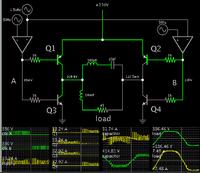HARSHID1993
Newbie level 6

- Joined
- Aug 26, 2014
- Messages
- 14
- Helped
- 0
- Reputation
- 0
- Reaction score
- 0
- Trophy points
- 1
- Activity points
- 89
I have designed SPWM inverter and i got waveform as show in fig but problem is that i want to convert that waveform in to sine so i refer many of LC type filter but i didn't find any of proper method for that.
following are specification of inverter:
1 utput frequency -50Hz
utput frequency -50Hz
2:switching frequency - 4KHz
3 utput voltage-230VAC
utput voltage-230VAC
4 utput current:5A
utput current:5A
please help me out for above problem.
following are specification of inverter:
1
2:switching frequency - 4KHz
3
4
please help me out for above problem.





